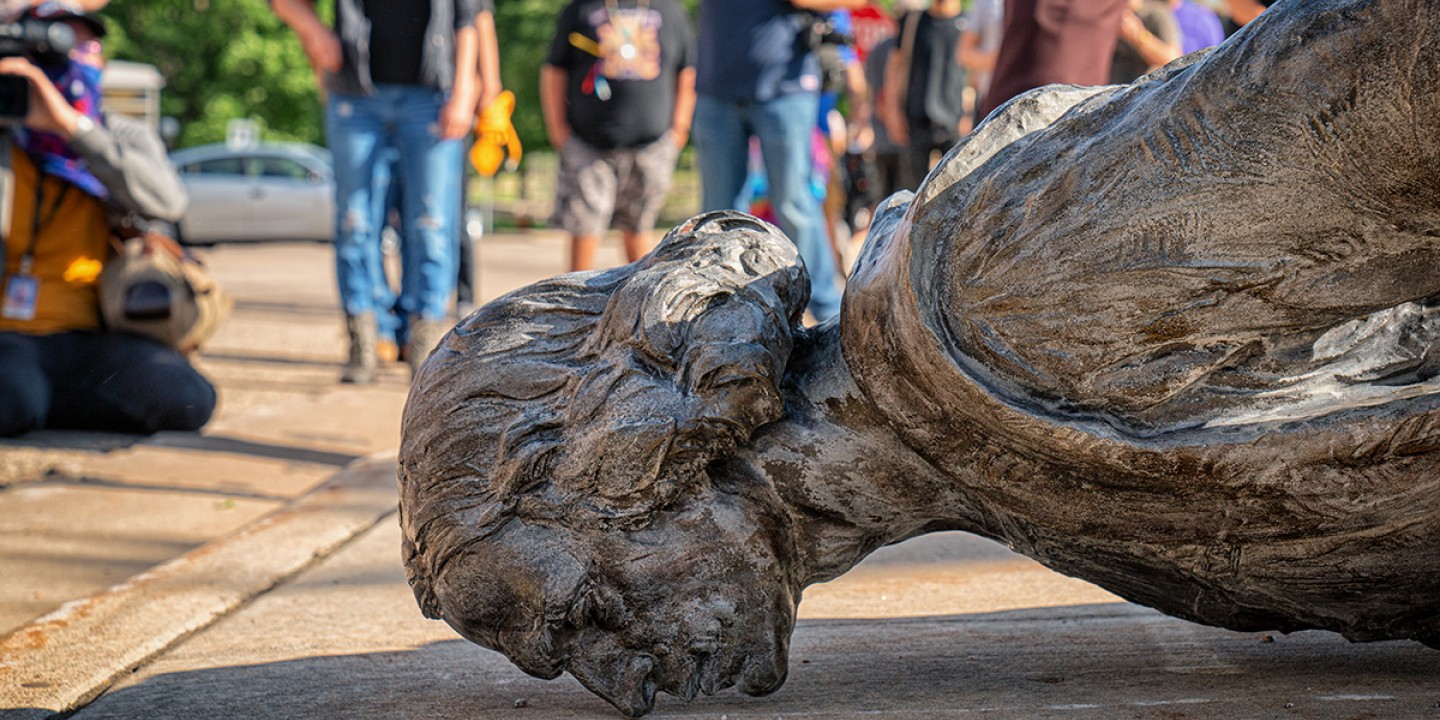Is the destruction of monuments a rewriting of history?
Holding in tension our achievements and failures as a nation

In a speech celebrating the opening of the National Museum of African American History and Culture, President George W. Bush said to the assembled guests: “A great nation does not hide its history. It faces its flaws and corrects them.” He went on to describe the enslavement of millions of people as America’s original sin. Facing that tragic flaw and working to correct it continues to assume vastly different forms, including the recent besieging of Confederate monuments by angry mobs. Protesters who arrive at monument sites with chains, ropes, and sledgehammers have no interest in deliberative conversations that wrestle with the mythology behind these propagandistic installations. They only want to see bronze icons memorializing racism knocked off their perches and dragged through the streets.
One of the unfortunate consequences of this anarchical purging is that it gives fire to critics eager to argue that vandals are attempting to rewrite history. What’s missing from such critiques, of course, is the fictional narrative behind the monuments themselves, bronze and granite monoliths installed to rewrite history and whitewash truths about the searing legacy of slavery. Most of the monuments were not erected in the decades immediately following the Confederacy’s defeat. They were commissioned and installed at the height of the Jim Crow era when white supremacists holding public office or leading civic institutions wanted to send a strong message to anyone championing racial equality. At the very time that Jim Crow laws sought to remove political and economic gains made by black people during Reconstruction, these towering monuments served to disguise the Confederacy’s doomed act of mass treason and failed attempt to preserve slavery.
Read our latest issue or browse back issues.
For those less certain that Confederate symbols deserve more attention for removal than other memorials dedicated to other historical figures with morally tainted lives, former New Orleans mayor Mitchell Landrieu provides helpful perspective. When his city took down four Confederate-related monuments in 2017, including one of Robert E. Lee atop a 60-foot obelisk, Landrieu advised:
Consider these monuments from the perspective of an African American mother or father trying to explain to their fifth-grade daughter who Robert E. Lee is and why he stands atop our beautiful city. Can you do it? Can you look into that young girl’s eyes and convince her that Robert E. Lee is there to encourage her? Do you think she will feel inspired and hopeful by that story?
Landrieu was calling out the historical malfeasance associated with monuments that celebrate a fictional, sanitized Confederacy.
As for broader efforts to remove memorials dedicated to everybody else in American history known to have slaveholding ties or racist thoughts, we’d be wise to guard against chronological snobbery. Imperfect people founded this country, but they founded it on principles that made slavery’s eradication inevitable. Assuming moral and intellectual superiority to prior generations is relatively easy. But looking down on past heroes whom we presume to be hopelessly ignorant is sanctimonious arrogance. To feel more enlightened than they were shouldn’t be cause for self-congratulation.
Presentism can ignore the complicated web of strengths and weaknesses, achievements and failures inherent in all of us. My own theological tradition reminds me that each of us is wholly sinful and wholly redeemed, never one without the other. We live commendable lives and yet leave footprints of hypocrisy wherever we walk. So, let’s retain humility and perspective for every monument removed, and let’s also commit to remembering that fifth-grade girl.
A version of this article appears in the print edition under the title “Sanitizing history.”






